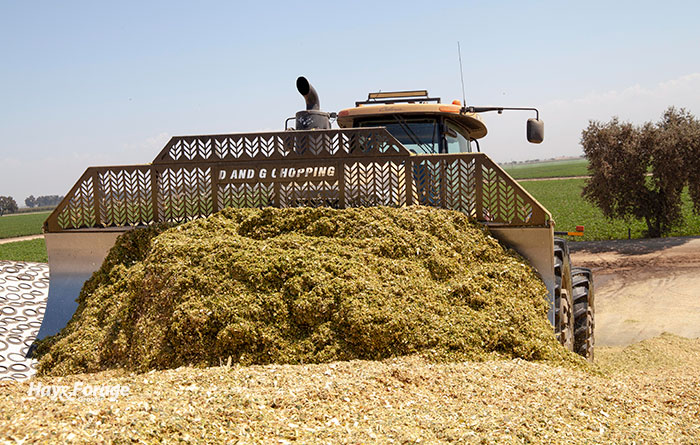
No matter how silage is stored, silage leachate can be a concern. It’s high biochemical oxygen demand (BOD), low pH, and high reducing potential can threaten the environment.
John Tyson with Penn State Extension explains that BOD is a measurement of how much oxygen is needed to break a substance down. Silage leachate has a BOD of approximately 50,000 milligrams of oxygen per liter, which is nearly 100 times greater than that of raw sewage. This can be detrimental to surface water and groundwater quality.
“As little as one gallon of silage leachate can lower the oxygen content of 10,000 gallons of fresh water to a critical level for fish survival,” Tyson says. “If silage leachate enters surface waters during periods when the flow is low and water temperatures are warm, the oxygen depletion is further aggravated,” he adds.
In addition to a high BOD, silage leachate’s pH is often low, ranging between 3.6 and 5.5. This further adds to the substance’s pollution potential and can even cause vegetation burns around silos.
Store correctly
To manage silage leachate, the first thing to do is minimize how much is produced. Harvesting silage with a dry matter (DM) content of 30% or greater will reduce the amount of leachate that is created.
Next, consider how and where silage will be stored. Depending on factors such as geology, soil type, well type, and silo type, Tyson recommends placing silos 50 to 250 feet away from waterways and wells.
“An unused piece of pasture by the stream may seem like a nice place for a bunker silo, but the potential for silage leachate to pollute that stream is extremely high,” Tyson says. “Proper selection and preparation of the silo will help the minimization, collection, and/or treatment of the leachate.”
For silage piles, site them on a slope of less than 2% and at least 5 feet above the seasonal high-water table. Covering piles, as well as horizontal silos, will also mitigate the flow of silage leachate.
For both silo and bunker systems, design sites so runoff is directed to a common point and divert clean water away from these locations. This will lessen contamination and allow silage leachate to be collected.
Handle with care
“Proper siting of silage storage facilities and piles, diversion of clean water away from the site, harvesting at proper moisture contents, and covering bunkers, trenches, and piles can all help minimize leachate,” Tyson asserts. “But all leachate should be collected and treated appropriately.”
There are many ways silage leachate can be handled, and one of the most common practices is to incorporate it into a liquid manure system. If utilizing this method, take caution when mixing the two substances together.
“Be very careful when mixing silage leachate with manure,” Tyson advises. “Hydrogen sulfide and other poisonous gases are produced, and it should not be mixed if the storage is covered or under a barn.”
Silage leachate can also be applied to cropland since its nutrient content is similar to that of liquid dairy manure. If applying it to growing crops, dilute the substance with water using a ratio of 1-to-1. If the field is not growing crops, silage leachate can be directly applied.

Amber Friedrichsen is serving as the 2021 Hay & Forage Grower editorial intern. She currently attends Iowa State University where she is majoring in agriculture and life sciences education-communications with a minor in agronomy. Friedrichsen grew up on her family’s diversified crop and livestock farm near Clinton, Iowa.

